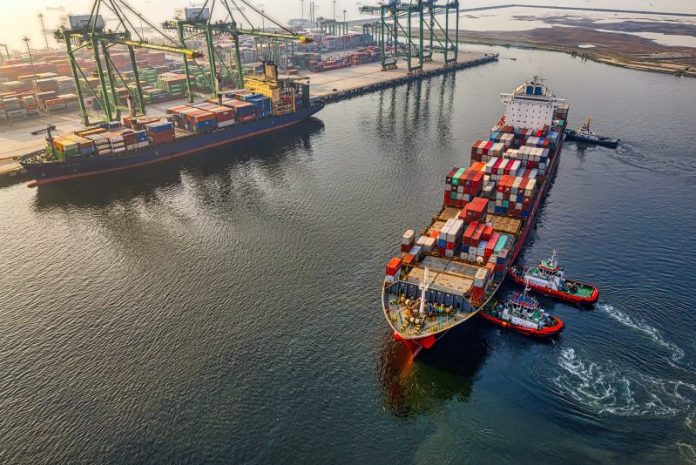-
The Bureau of Customs has created codes in its computer system for the use of preferential rates under the Regional Comprehensive Economic Partnership Agreement
-
The codes for RCEP preferential tariff took effect on June 25
-
The creation of preference codes is in keeping with EO 25, which operationalizes the Philippines’ tariff commitments under RCEP
The Bureau of Customs (BOC) has created codes for preferential rates under the Regional Comprehensive Economic Partnership (RCEP).
The preference codes took effect on June 25, according to Management Information Systems and Technology Group (MISTG) Memo No. 10-2023 by MISTG officer-in-charge deputy commissioner Kriden Balgomera.
The following preference codes, created in BOC’s Electronic-to-Mobile System, should be used for the availment of RCEP preferential tariff rates:
- RCEP (code) — Regional Comprehensive Partnership (description)
- RCEPAUNZ — RCEP – Australia and New Zealand
- RCEPCN — RCEP – China
- RCEPJP — RCEP – Japan
- RCEPKR — RCEP – Korea
The preference code must be inputted in the entry /single administrative document per item, then submitted to the BOC.
The creation of preference codes is in keeping with Executive Order (EO) No. 25, which operationalizes the Philippines’ tariff commitments under the free trade agreement and modifies the rates of import duty on certain imported items. The EO took effect on June 2, the same day RCEP entered into force in the Philippines.
Under EO 25, all originating goods of other parties to the RCEP and all originating goods of parties to the RCEP that are subject to tariff differentials and that are entered into or withdrawn from warehouses or Free zones in the Philippines for consumption or introduction to the customs territory, will be levied the prescribed rates of duty, subject to the submission of a Proof of Origin and compliance with all applicable requirements under the agreement.
The Tariff Commission may be requested to issue advance rulings on tariff classification of goods to confirm the applicable rates of duty of particular goods subject of the EO, consistent with Section 1100 of Republic Act No. 10863, or the Customs Modernization and Tariff Act.
Originating goods subject to tariff differentials will be eligible for preferential tariff treatment applicable to the originating goods of the exporting party, provided that the exporting party is the RCEP country of origin.
If the exporting party of the originating goods is not established to be the RCEP country of origin, the party that contributed the highest value of originating materials used in the production of those goods in the exporting party will be deemed the RCEP country of origin.
The originating goods will then be eligible for preferential tariff treatment applicable to the originating goods of the RCEP country of origin.
According to EO 25, the Philippines may allow an importer to make a claim for preferential tariff treatment at either:
- The highest rate of customs duty that the Philippines applies to the same originating goods from any of the parties contributing originating materials used in the production of such goods, provided that the importer is able to prove such claim.
- The highest rate of customs duty that the Philippines applies to the same originating goods from any of the parties.
Nothing in EO 25 should preclude the Philippine government from invoking its right of recourse to all trade remedy measures provided for in its laws, the RCEP Agreement, and other relevant international agreements, to ensure the prevention of import surges or unfair trade practices.
Following EO 25, BOC issued Customs Memorandum Order (CMO) No. 12-2023 providing the guidelines on the issuance and acceptance of proof of origin, granting of preferential tariff treatment, and verification procedures under the RCEP agreement.
CMO 12-2023, which also took effect on June 2, specifically implements Chapter 2 (Trade in Goods) and Chapter 3 (Rules of Origin) of the RCEP Agreement.
Under CMO 12-2023, originating goods will be eligible for RCEP preferential tariff treatment at the time of importation, pursuant to EO 25. The applicable RCEP preferential tariff rate will be determined based on the RCEP country of origin of the originating goods.
The RCEP is a free trade agreement between the 10 member states of ASEAN and its five FTA partners, Australia, China, Japan, New Zealand, and Republic of Korea. It was signed on November 15, 2020 after years of negotiation that began in 2012.
Trade Secretary Alfredo Pascual earlier said that essentially, the EO will maintain current preferential tariffs on about 98.1% of the 1,718 agricultural tariff lines and 82.7% of the 8,102 industrial tariff lines.
The RCEP covers a market of 2.2 billion people with a combined size of US$26.2 trillion or 30% of the world’s gross domestic product. The deal will improve market access with tariffs and quotas eliminated in over 65% of goods traded, and will make business predictable with common rules of origin and transparent regulations. This aims to encourage firms to invest more in the region, including building supply chains and services, and to generate jobs. – Roumina Pablo





